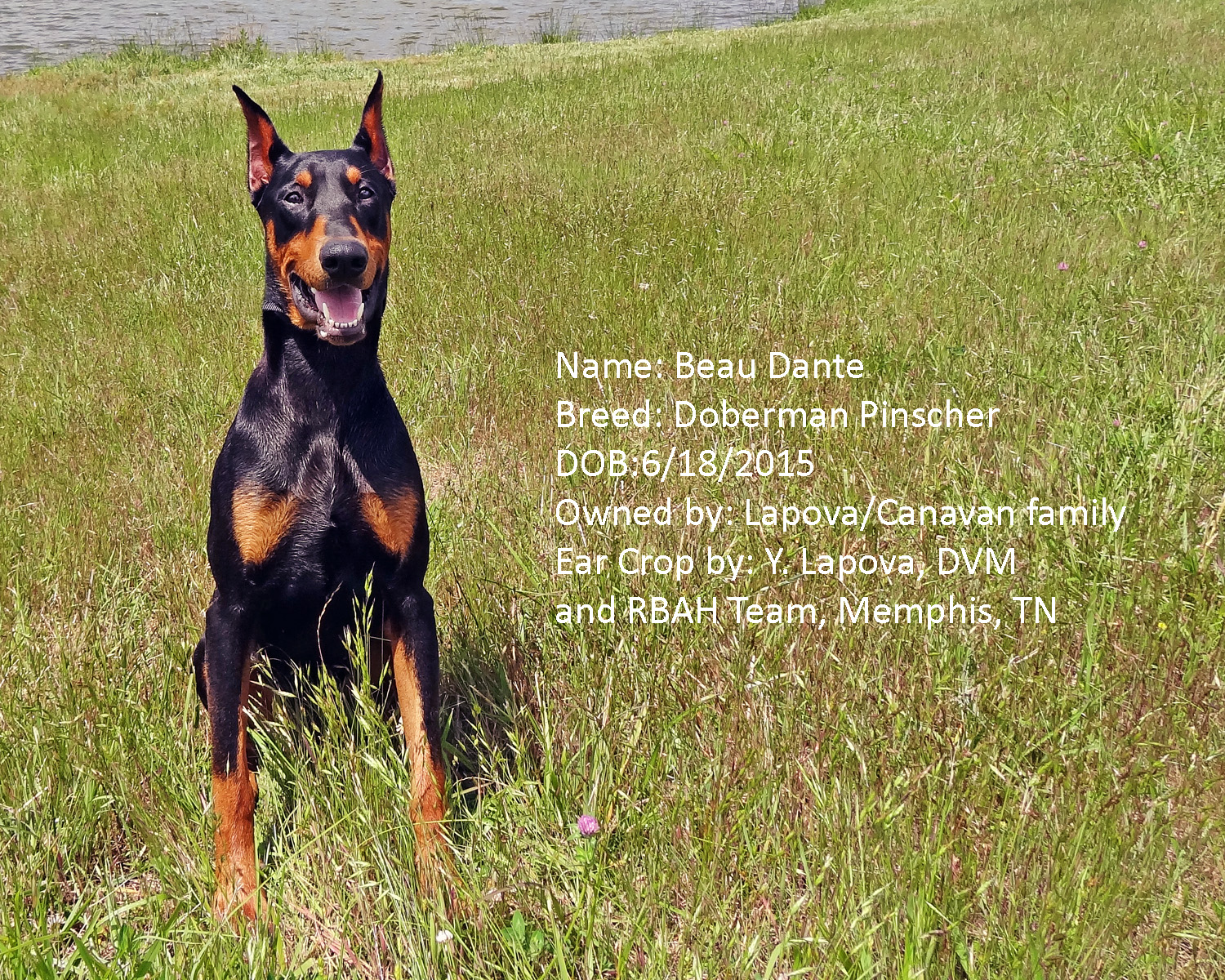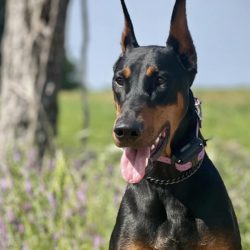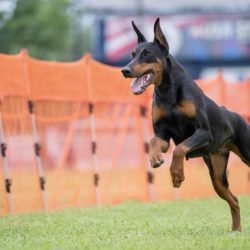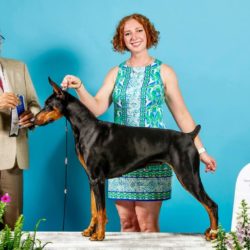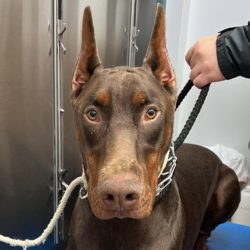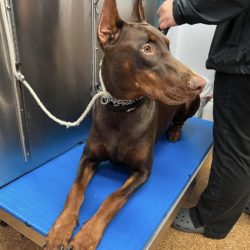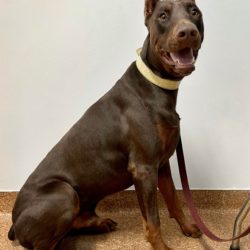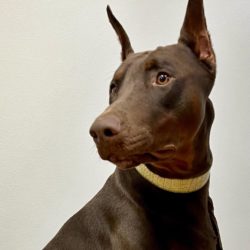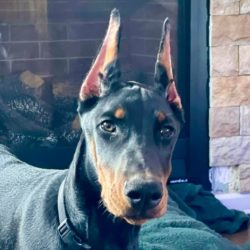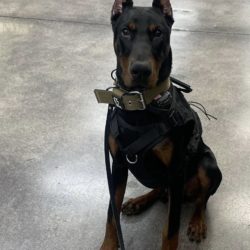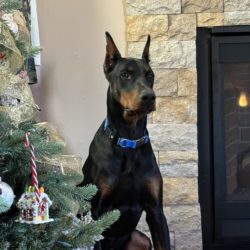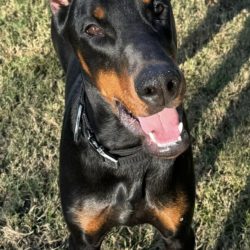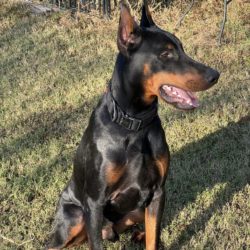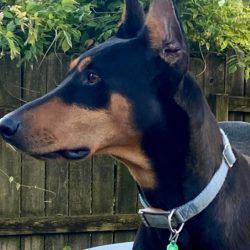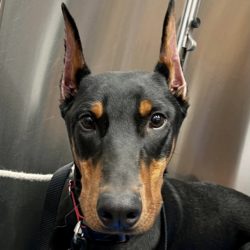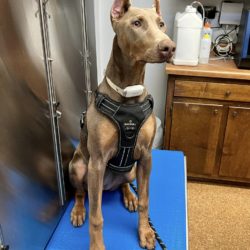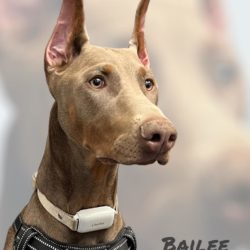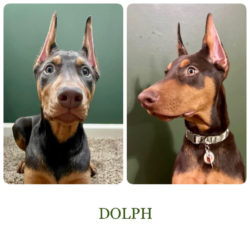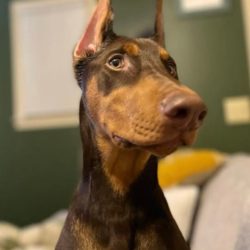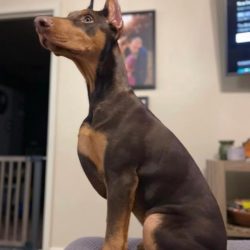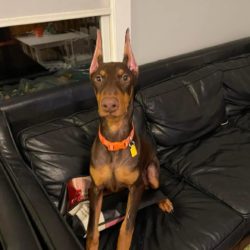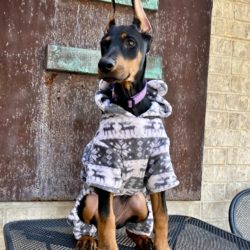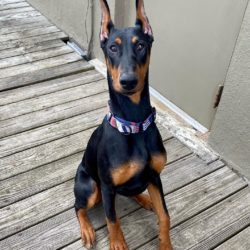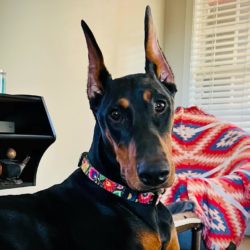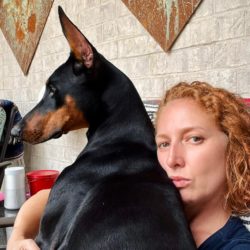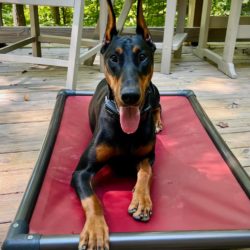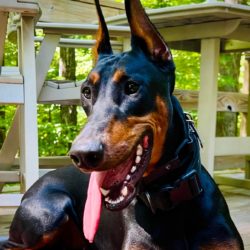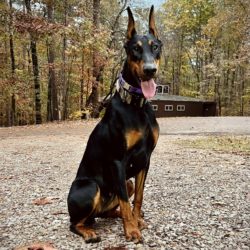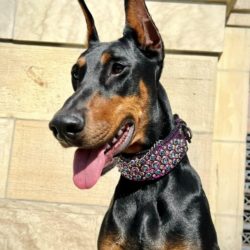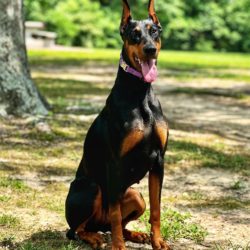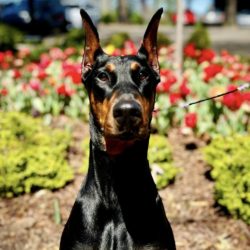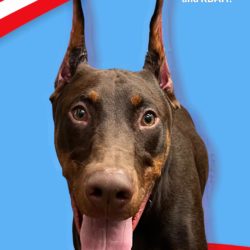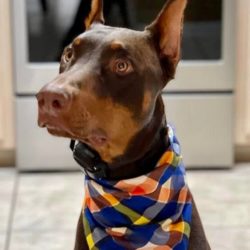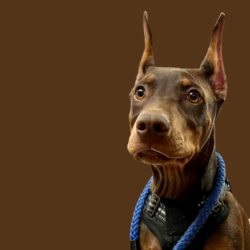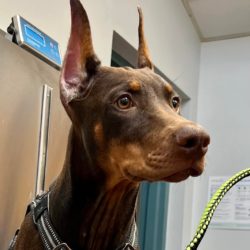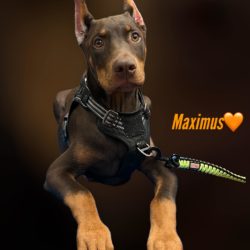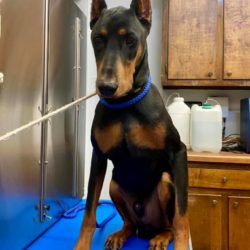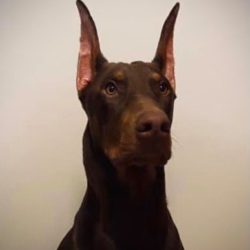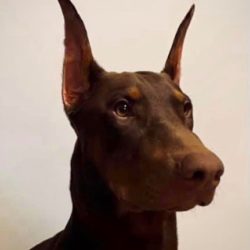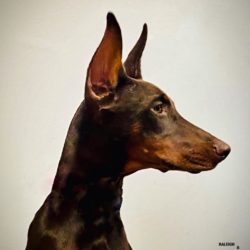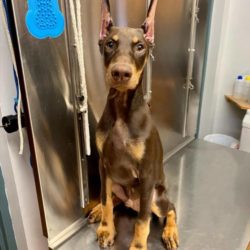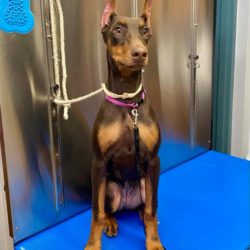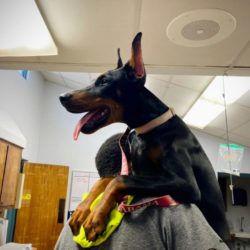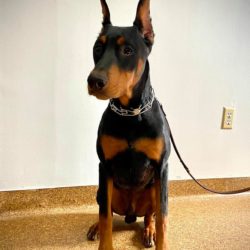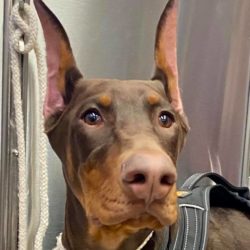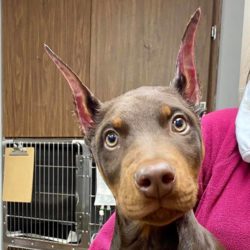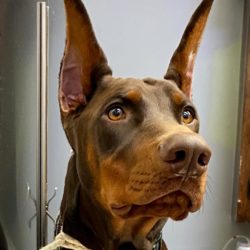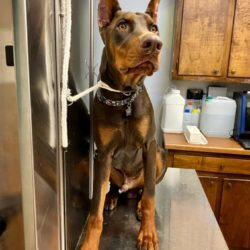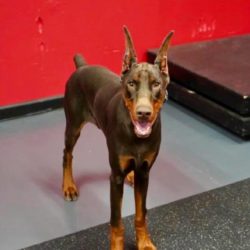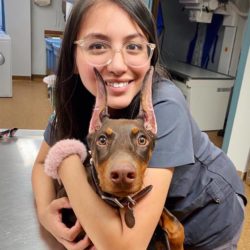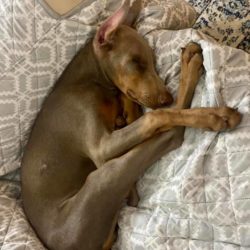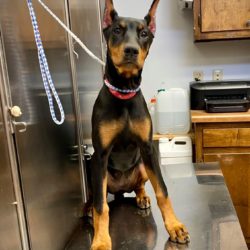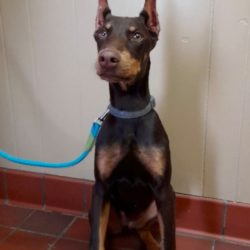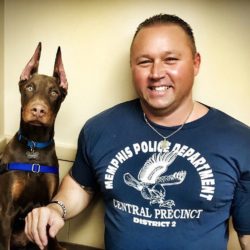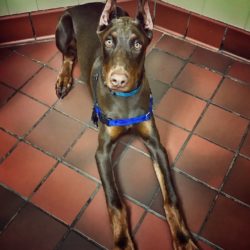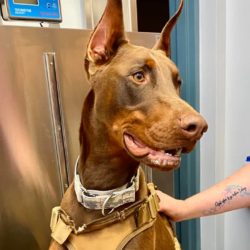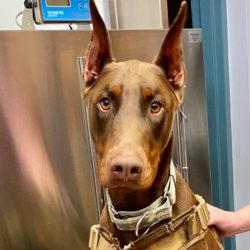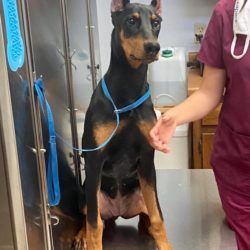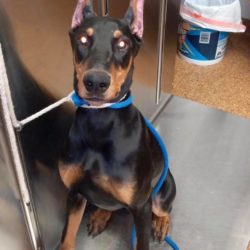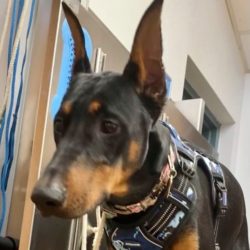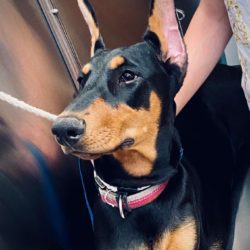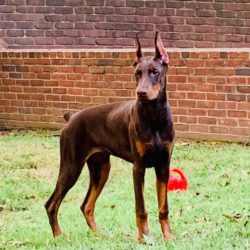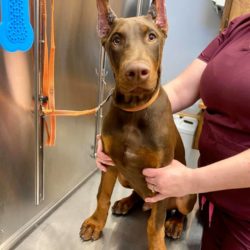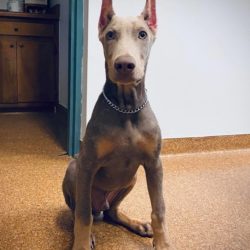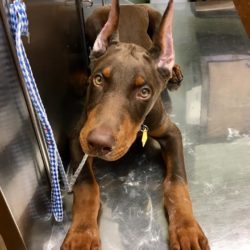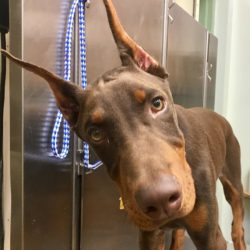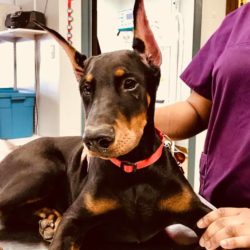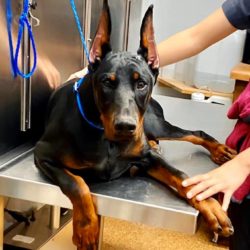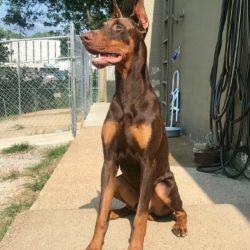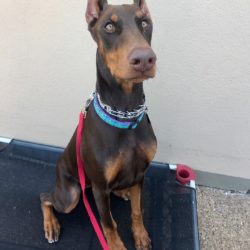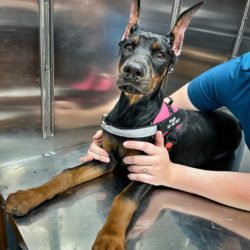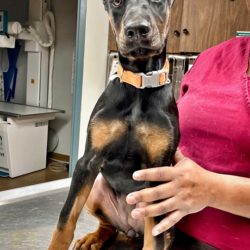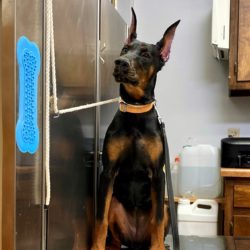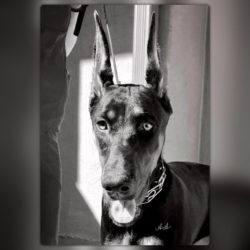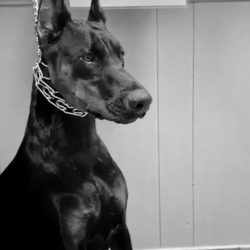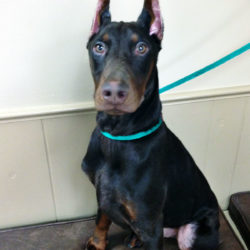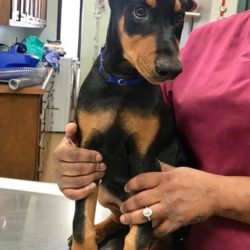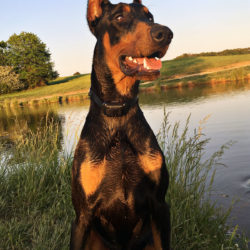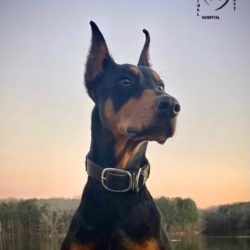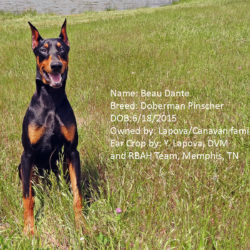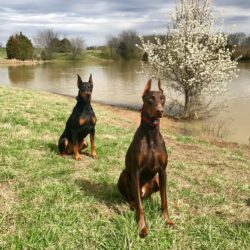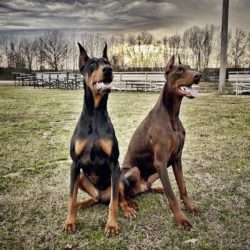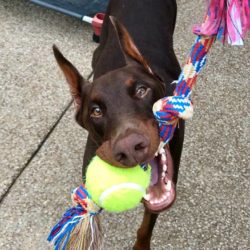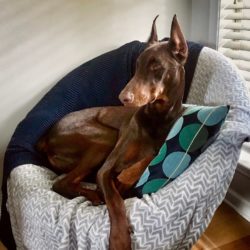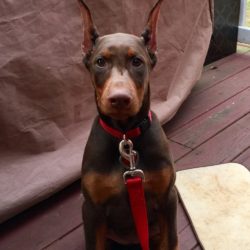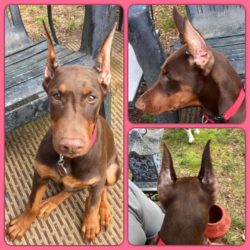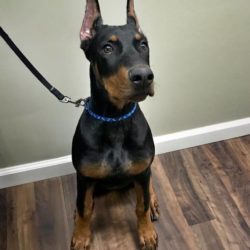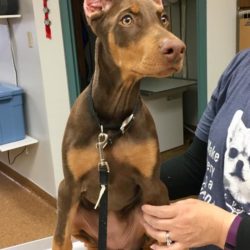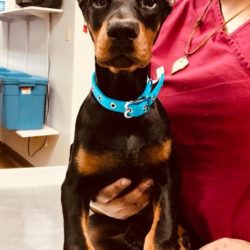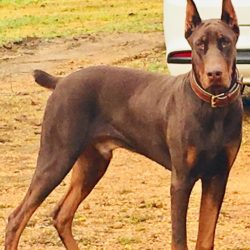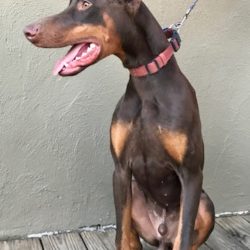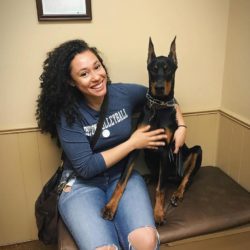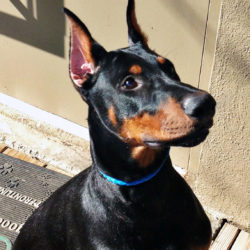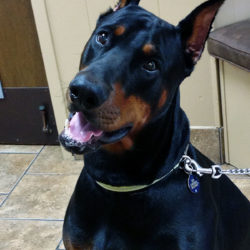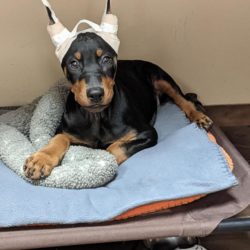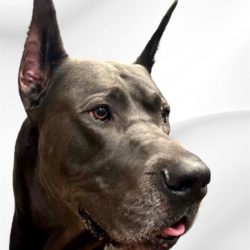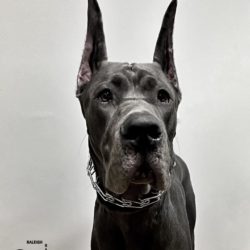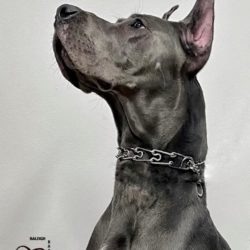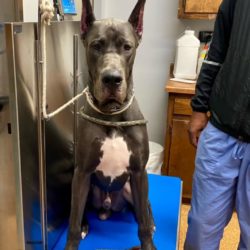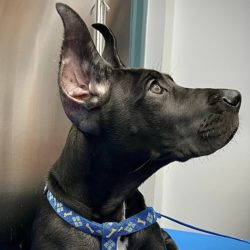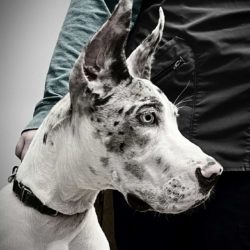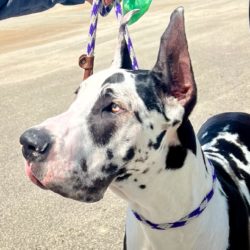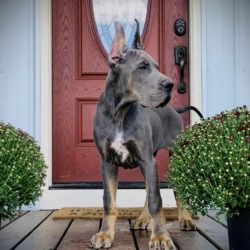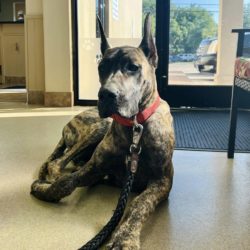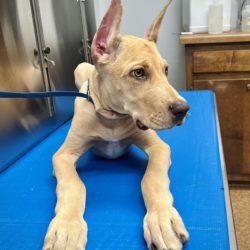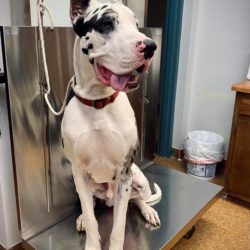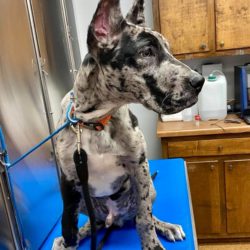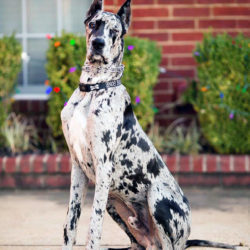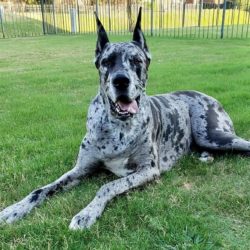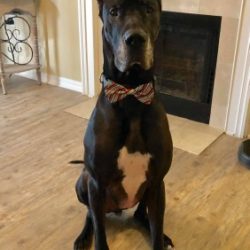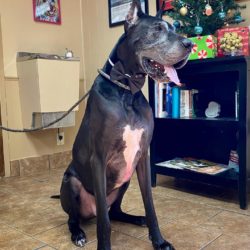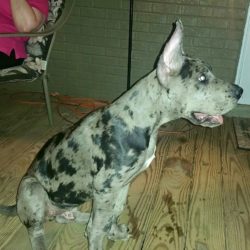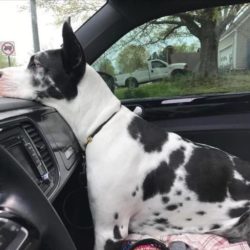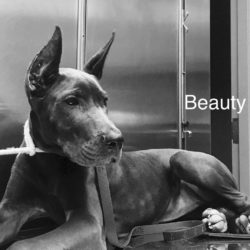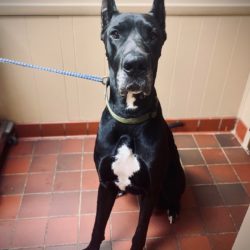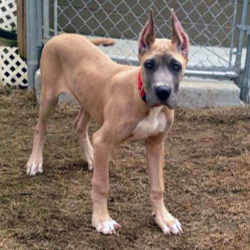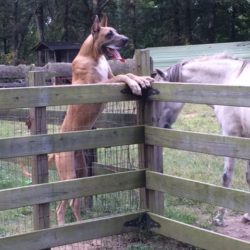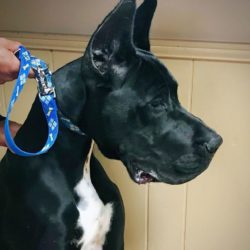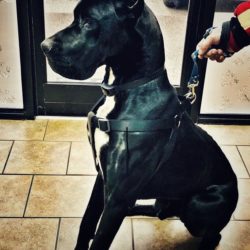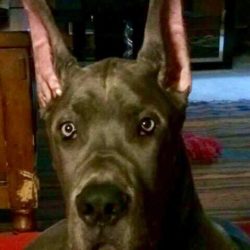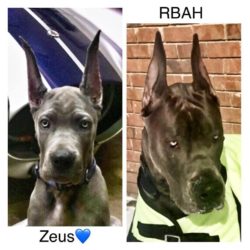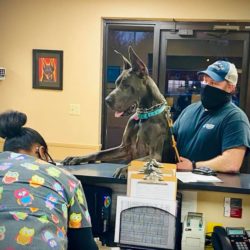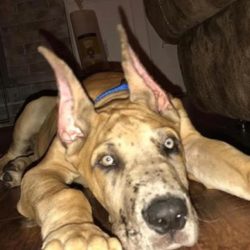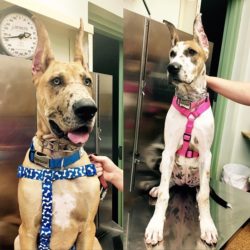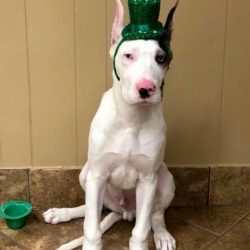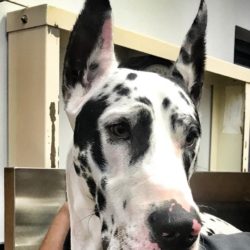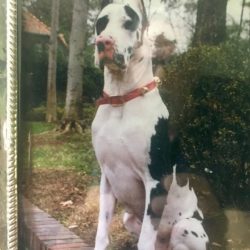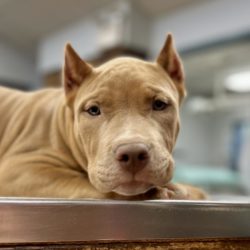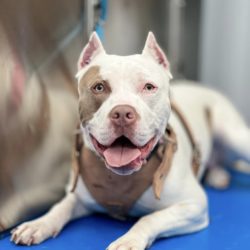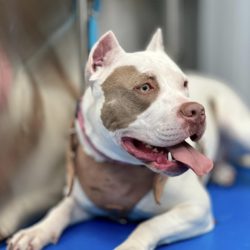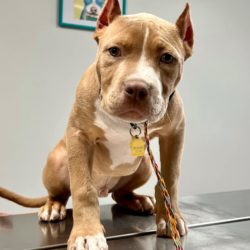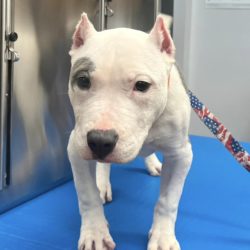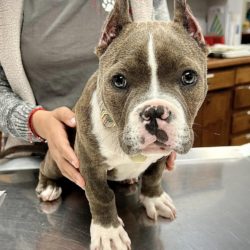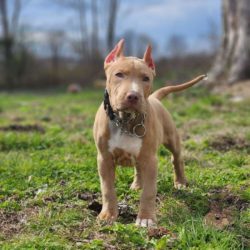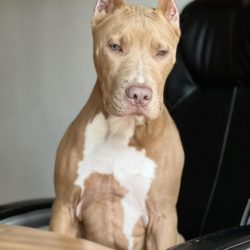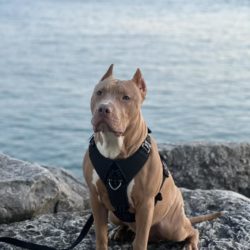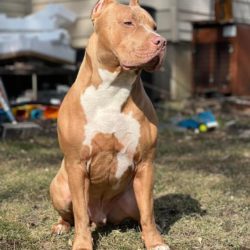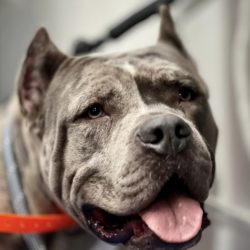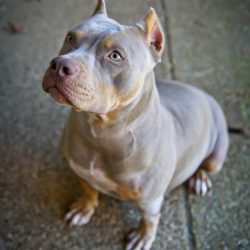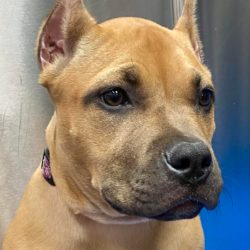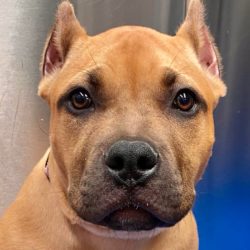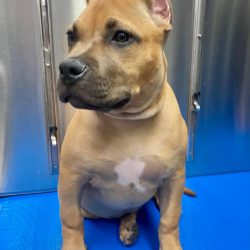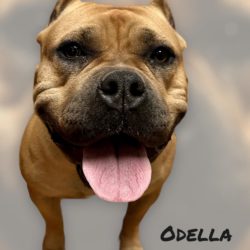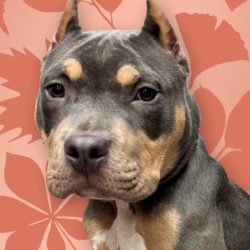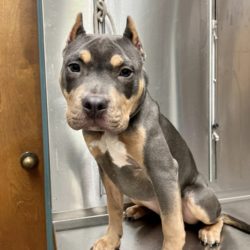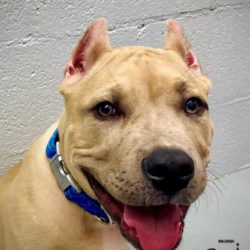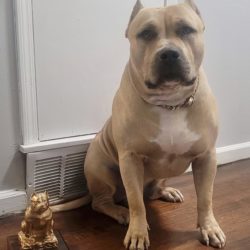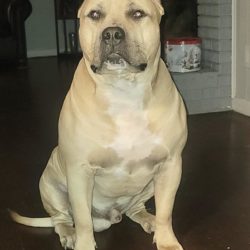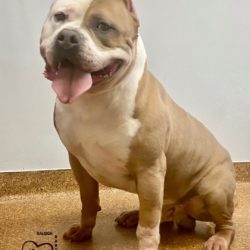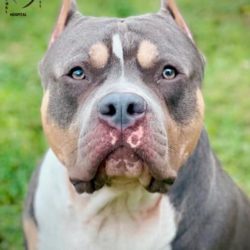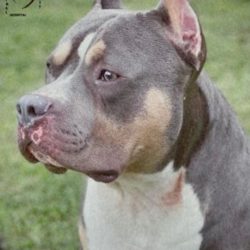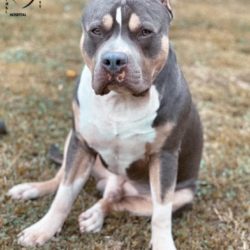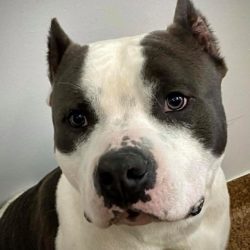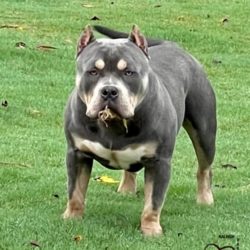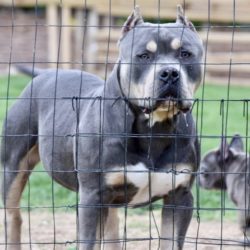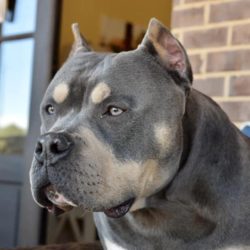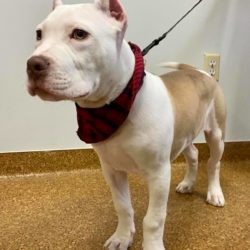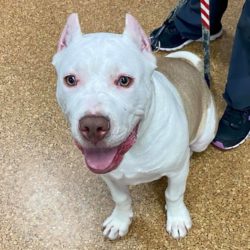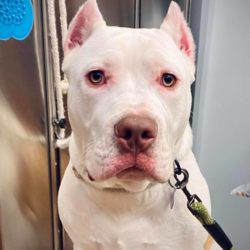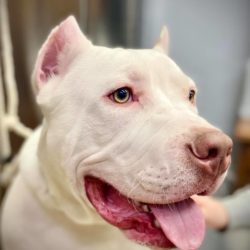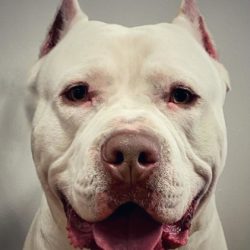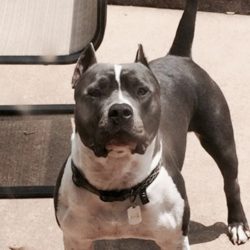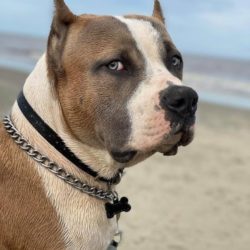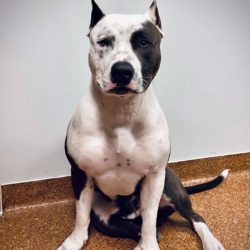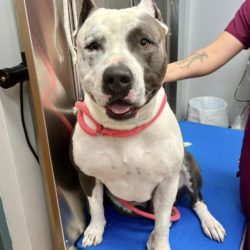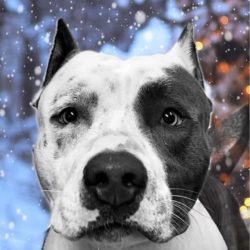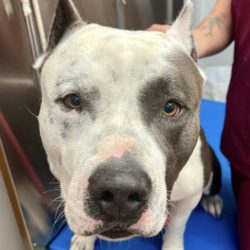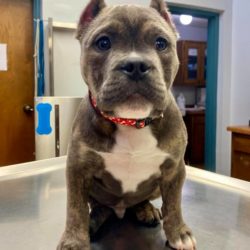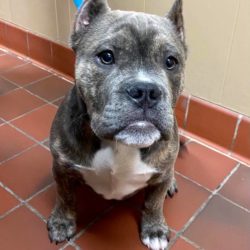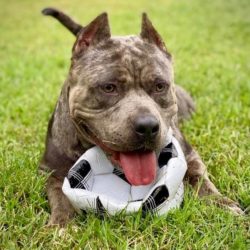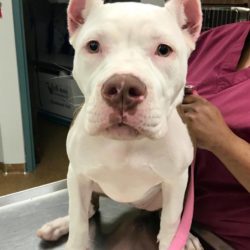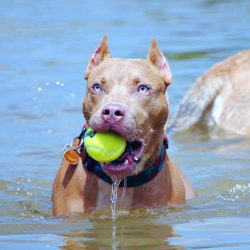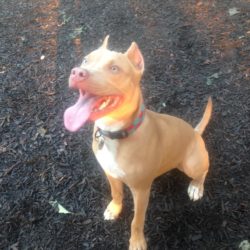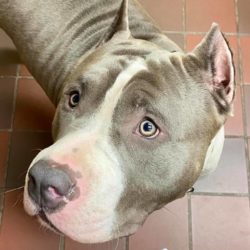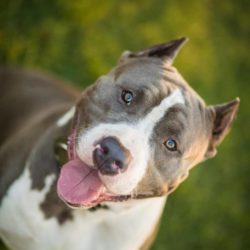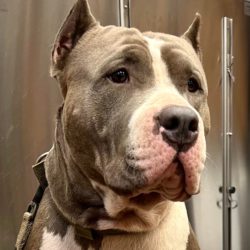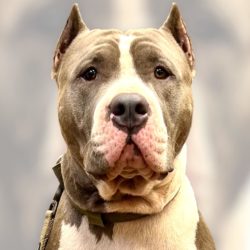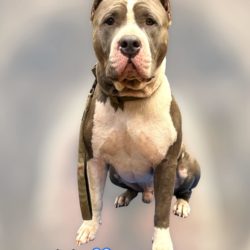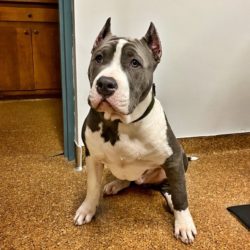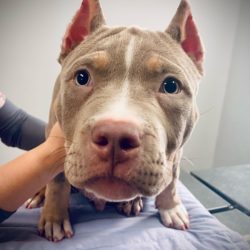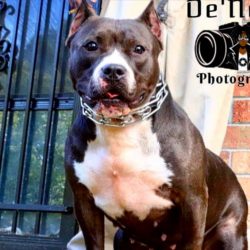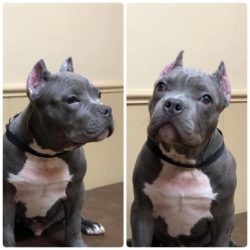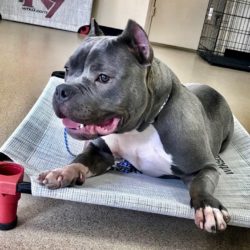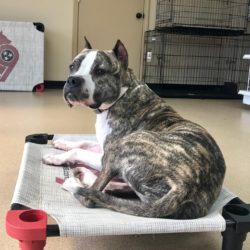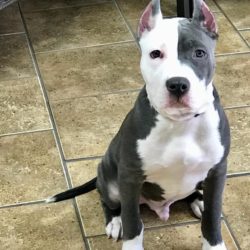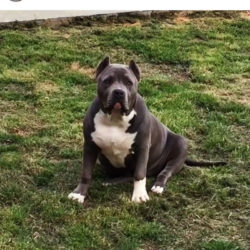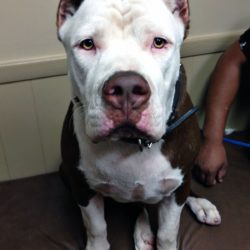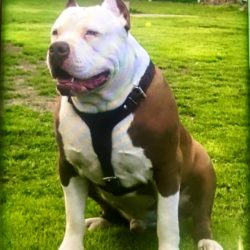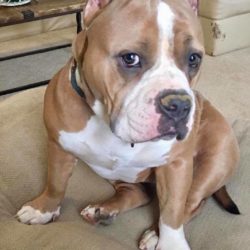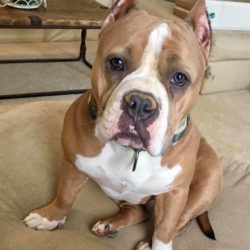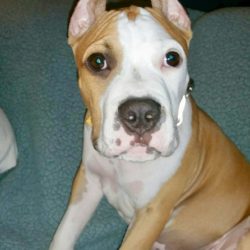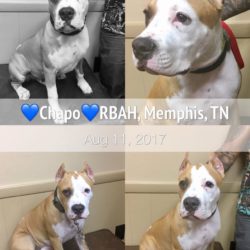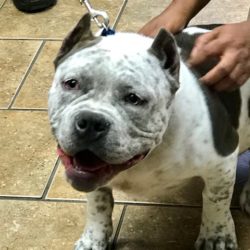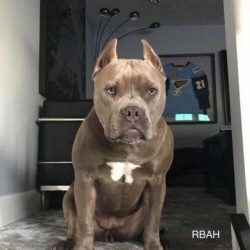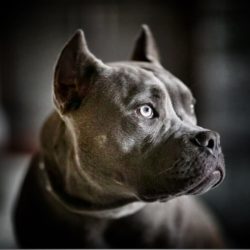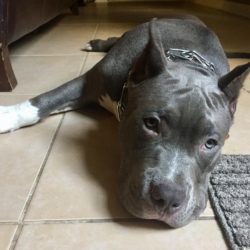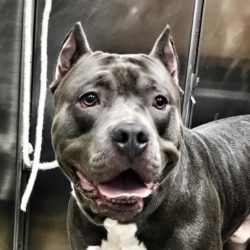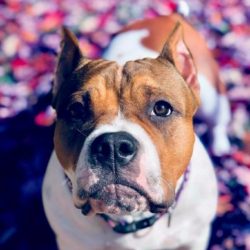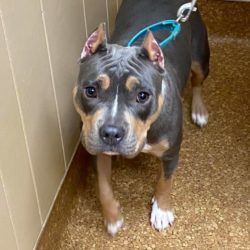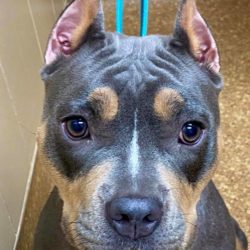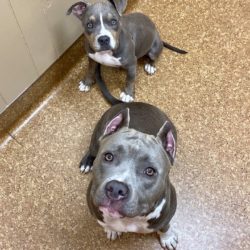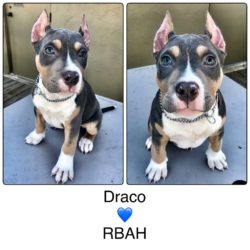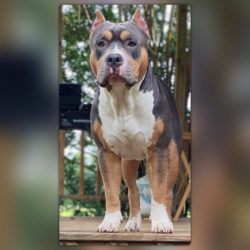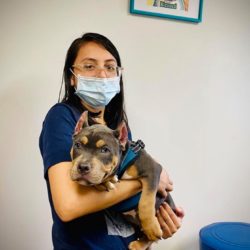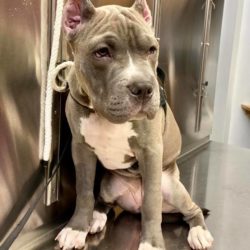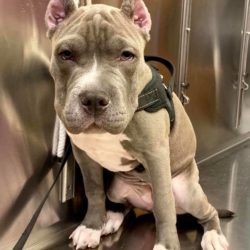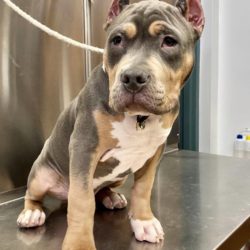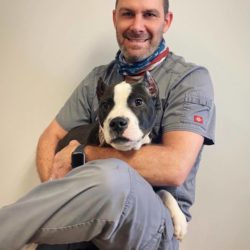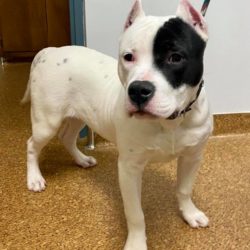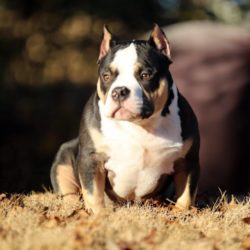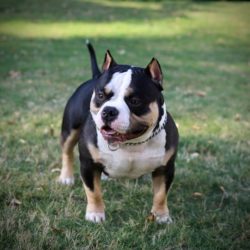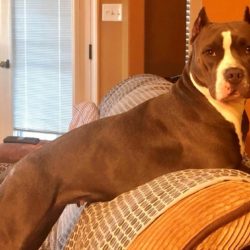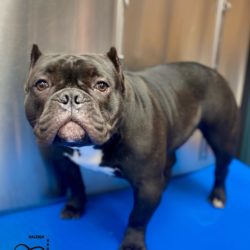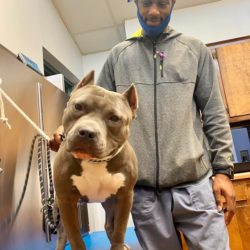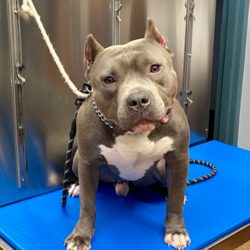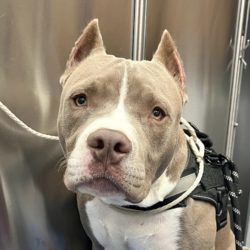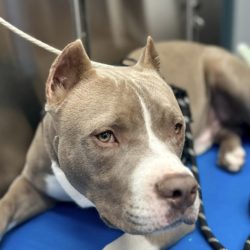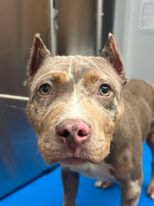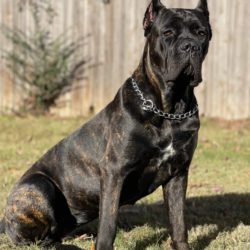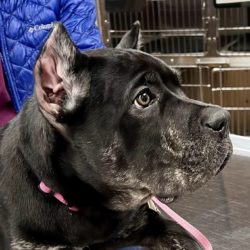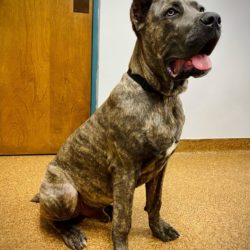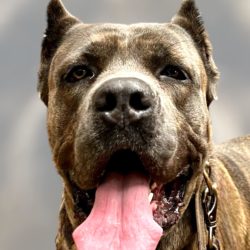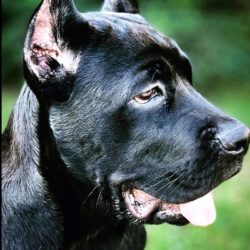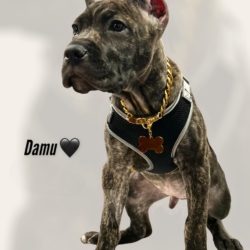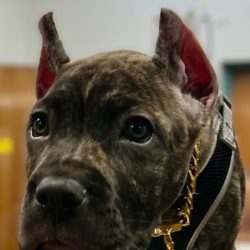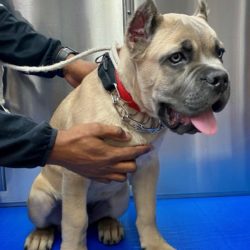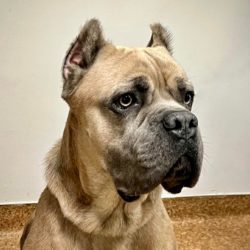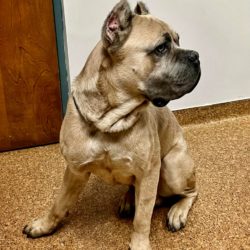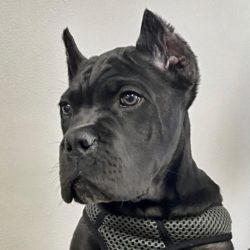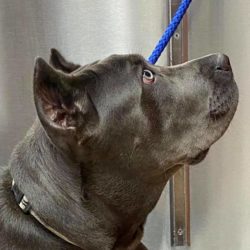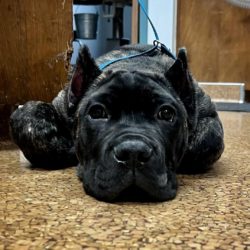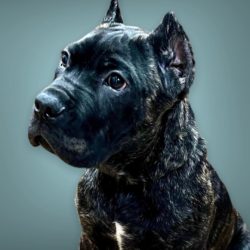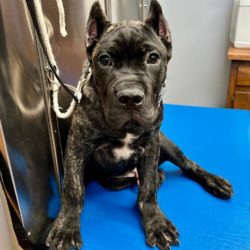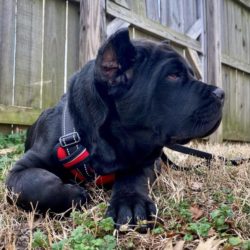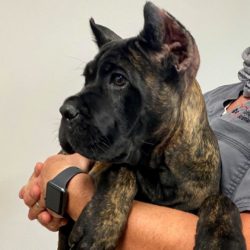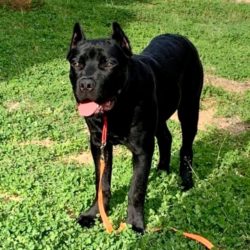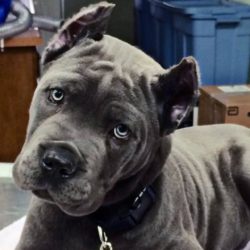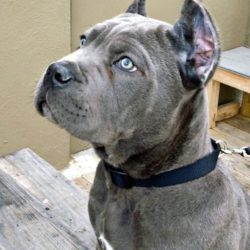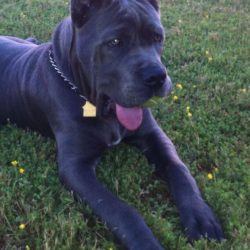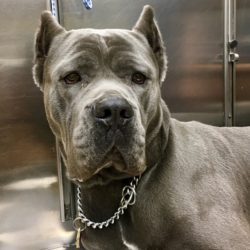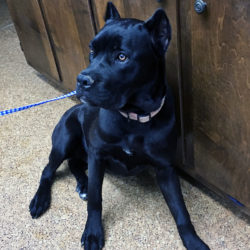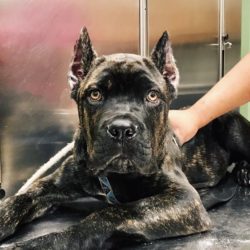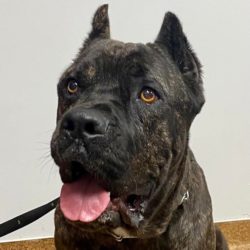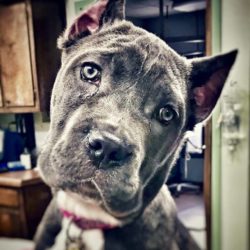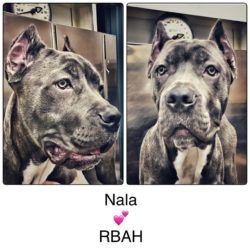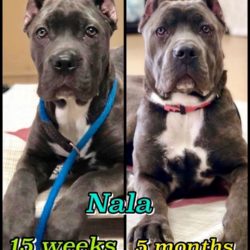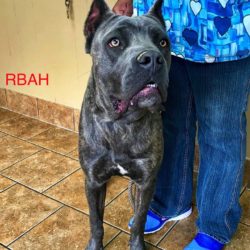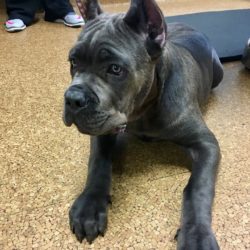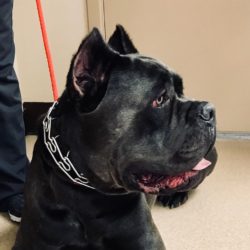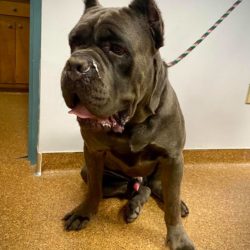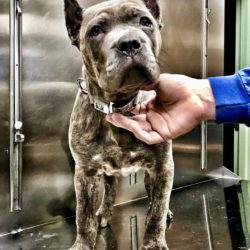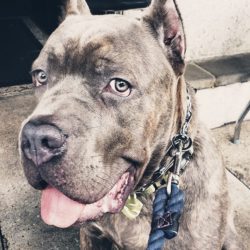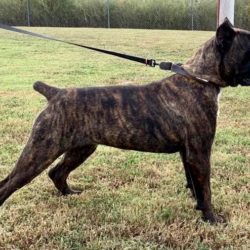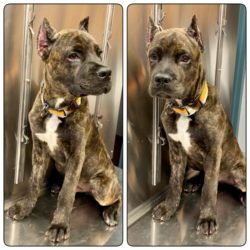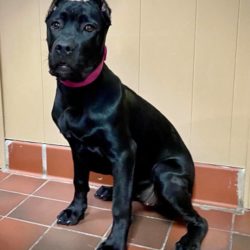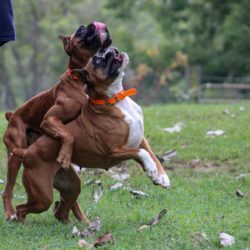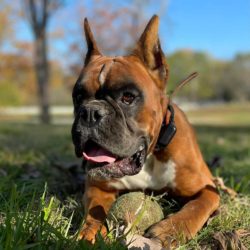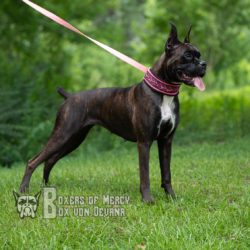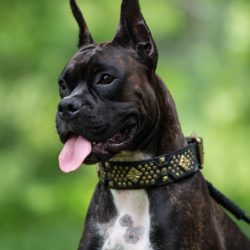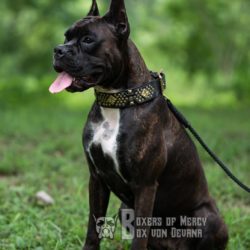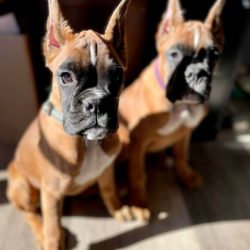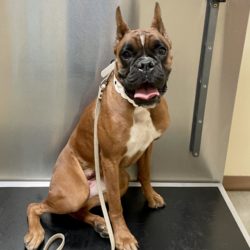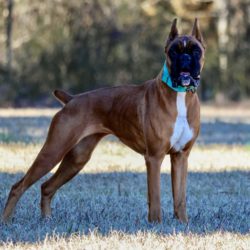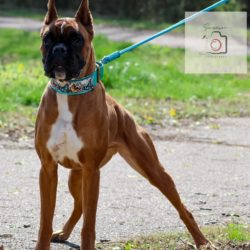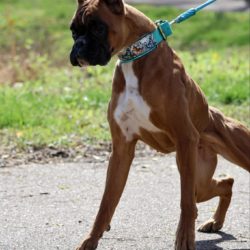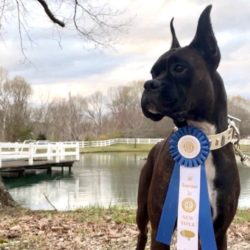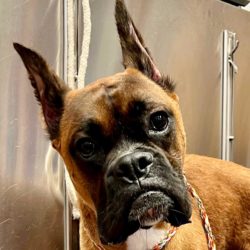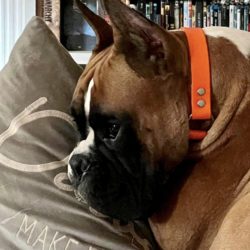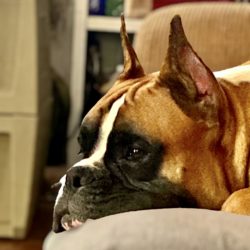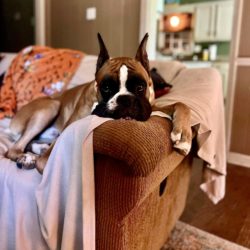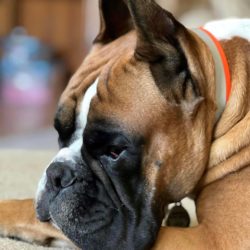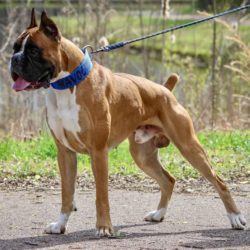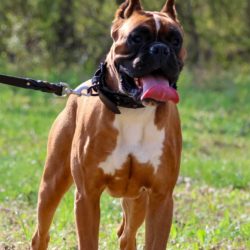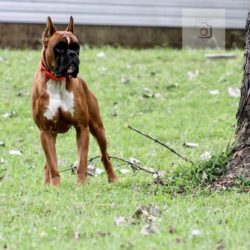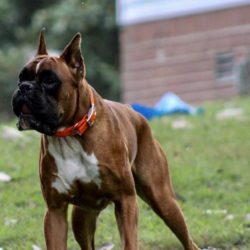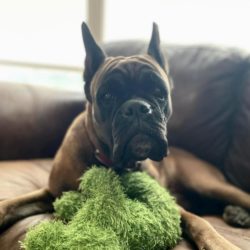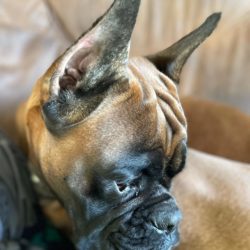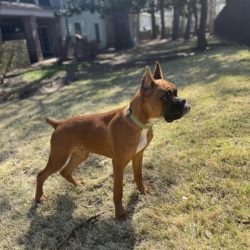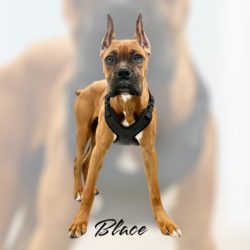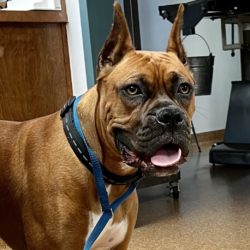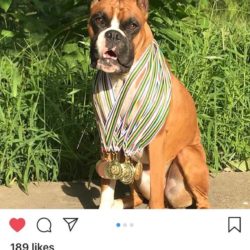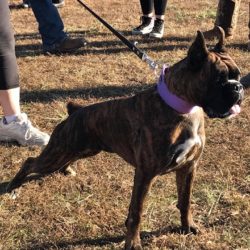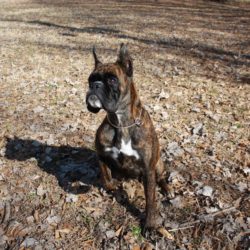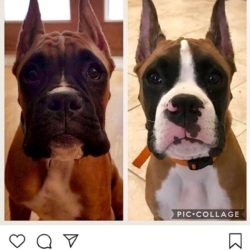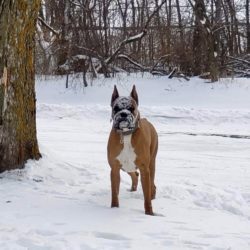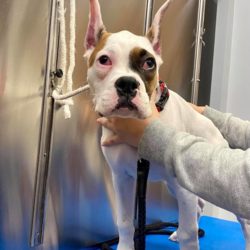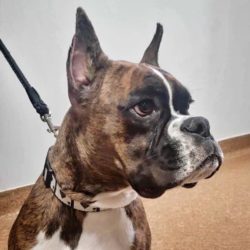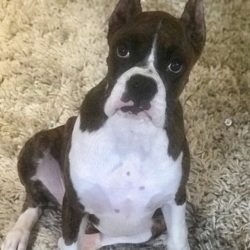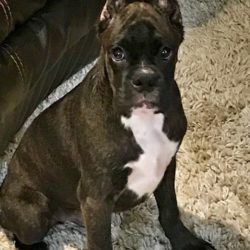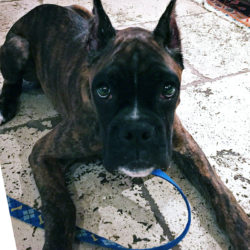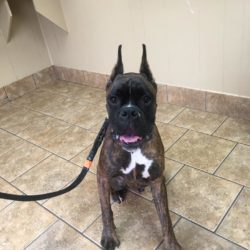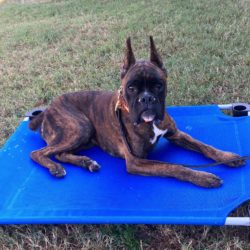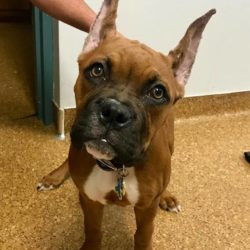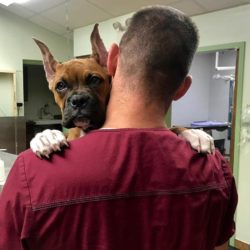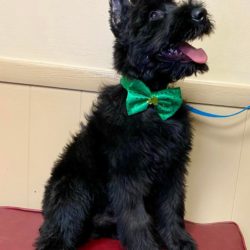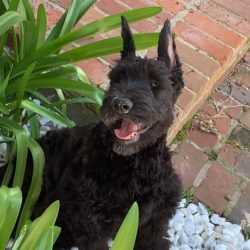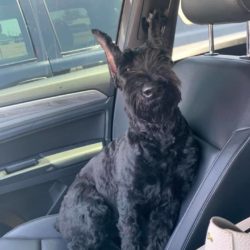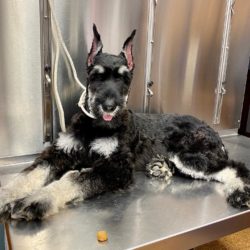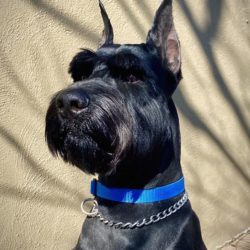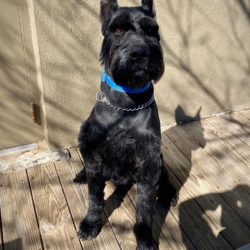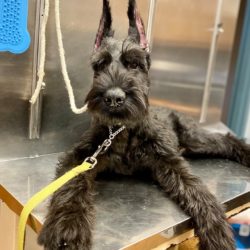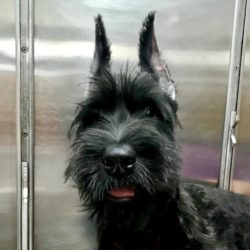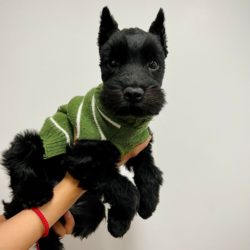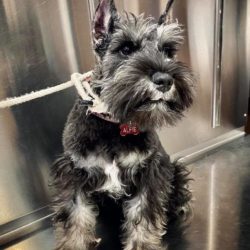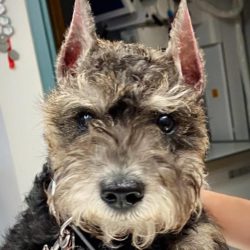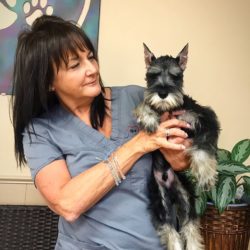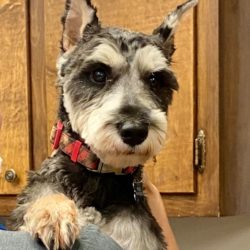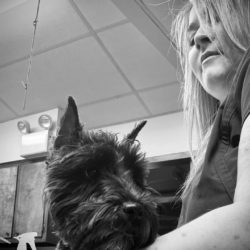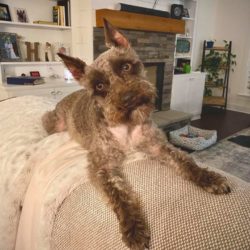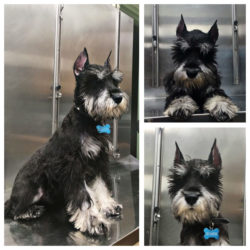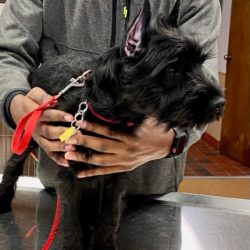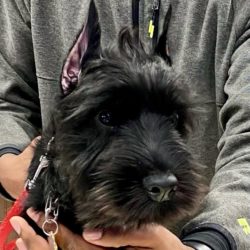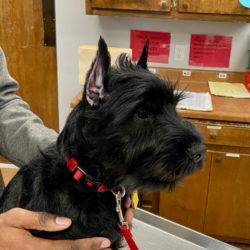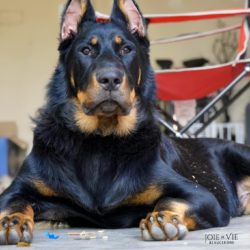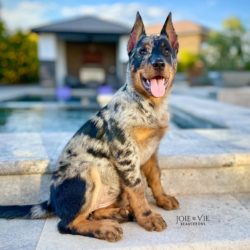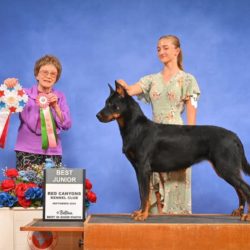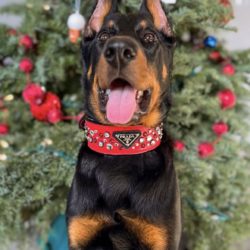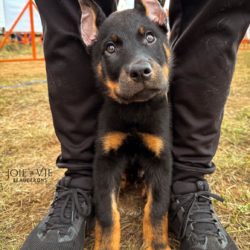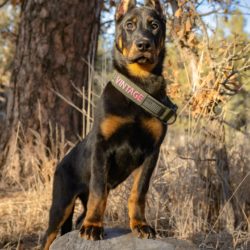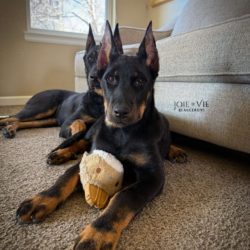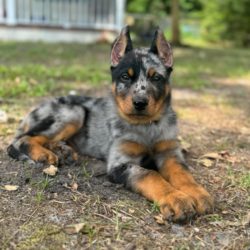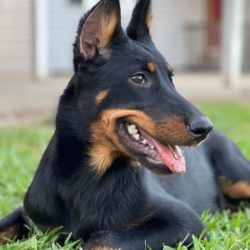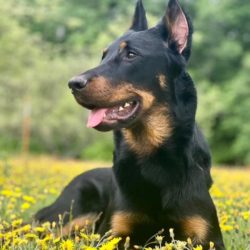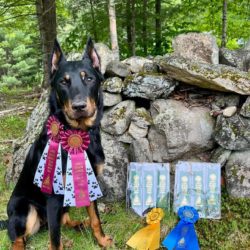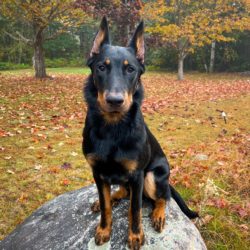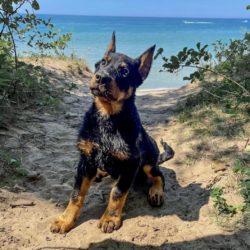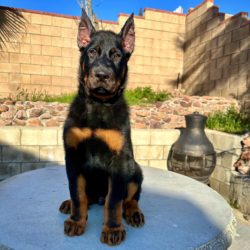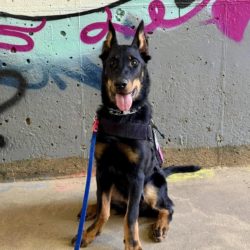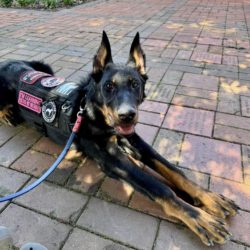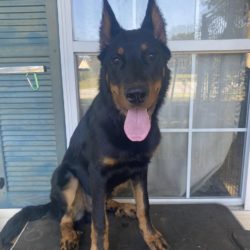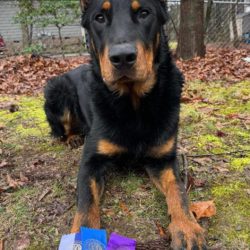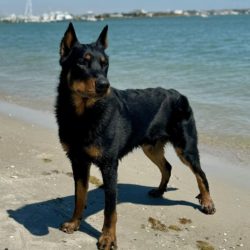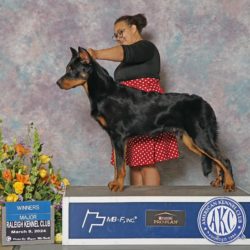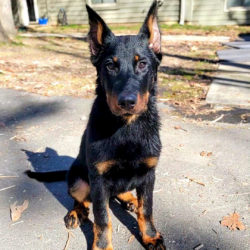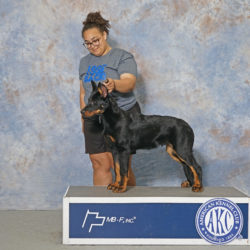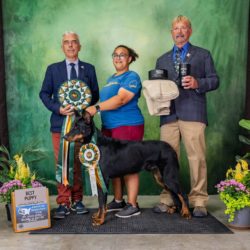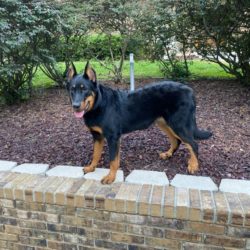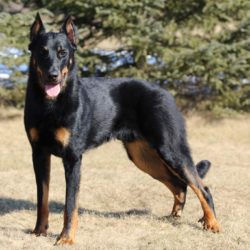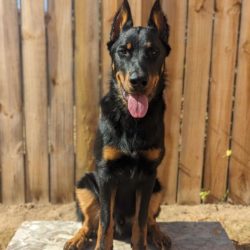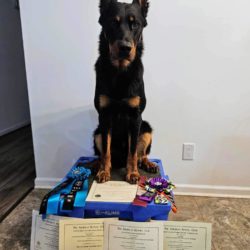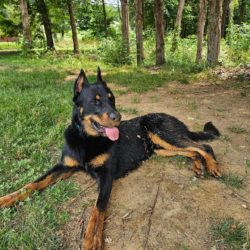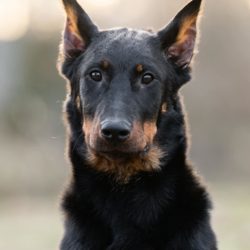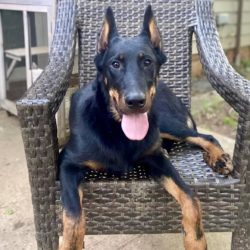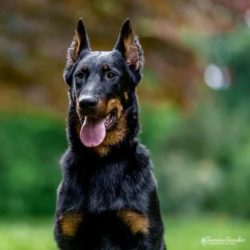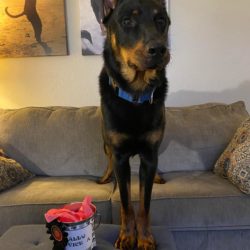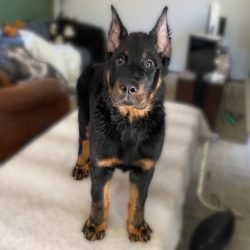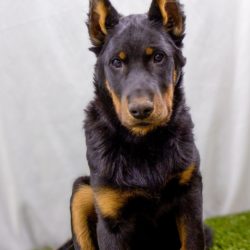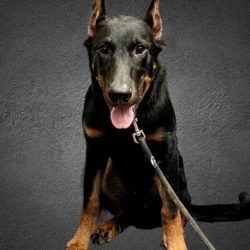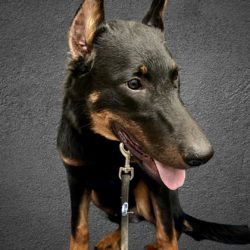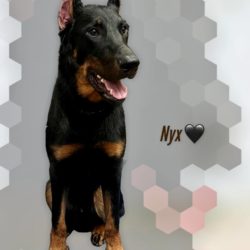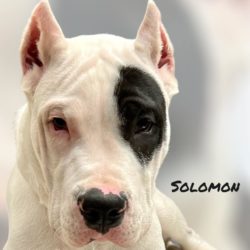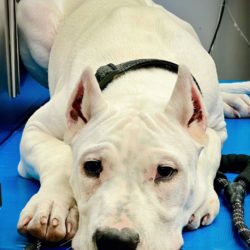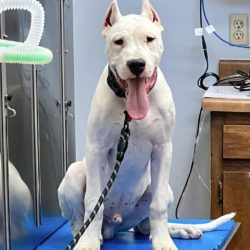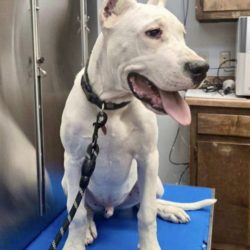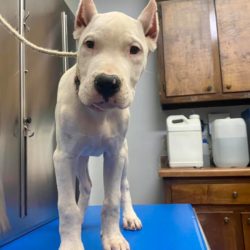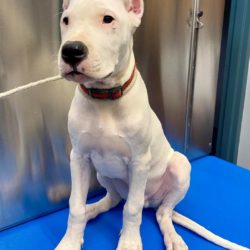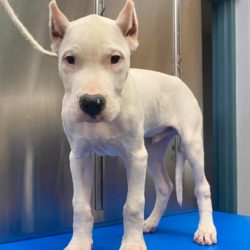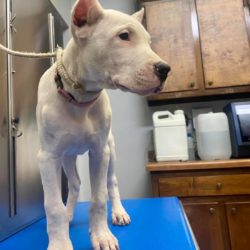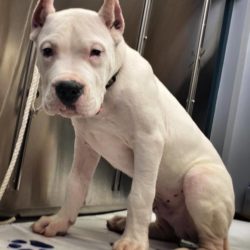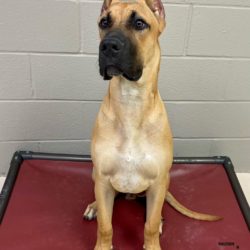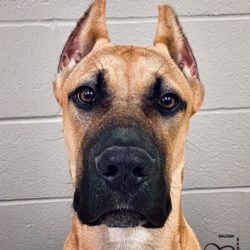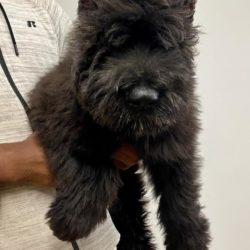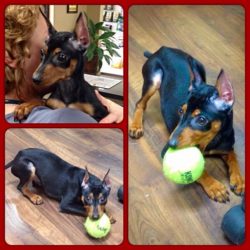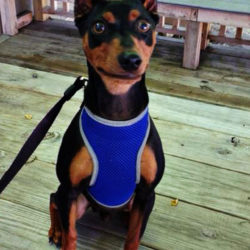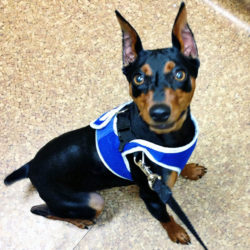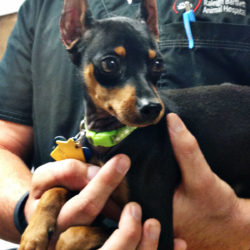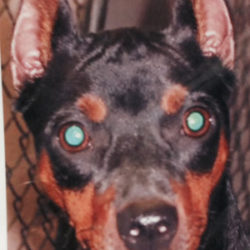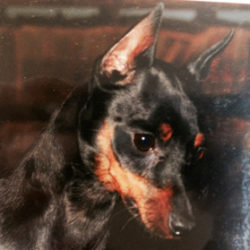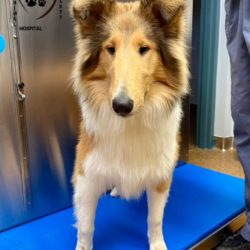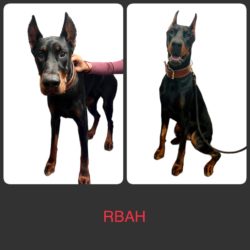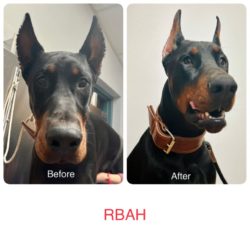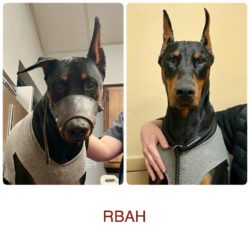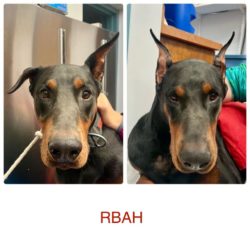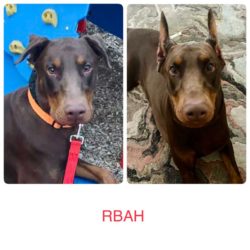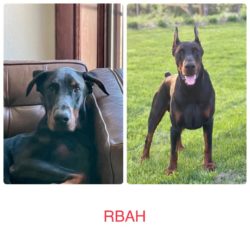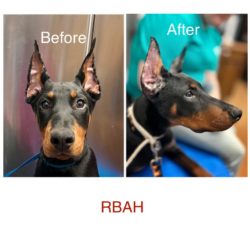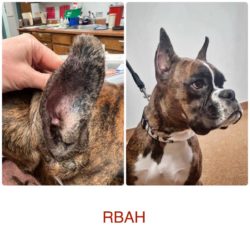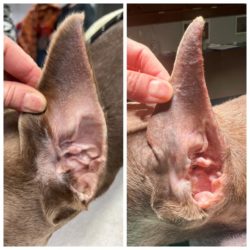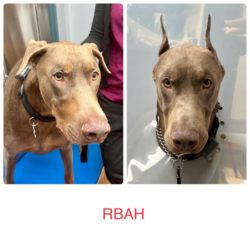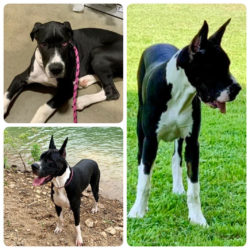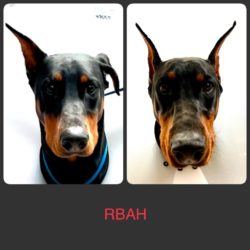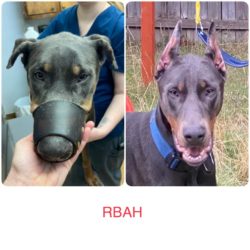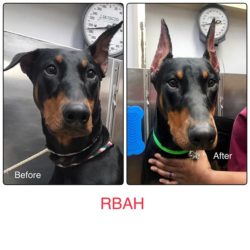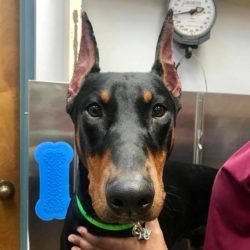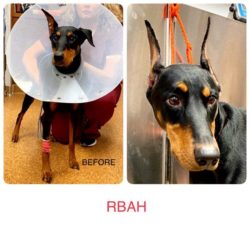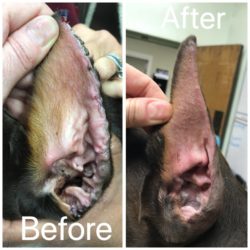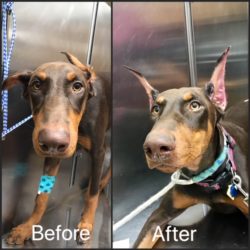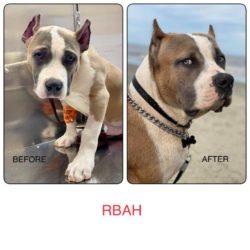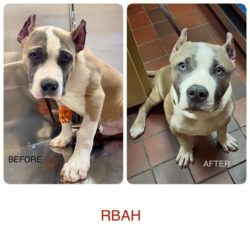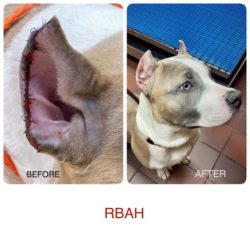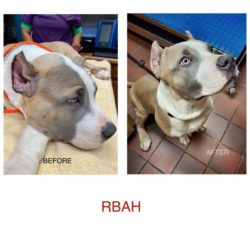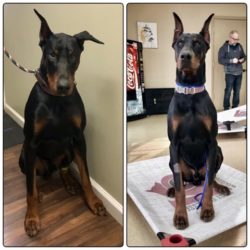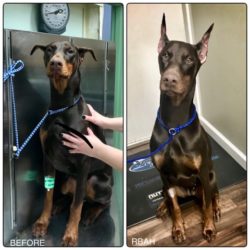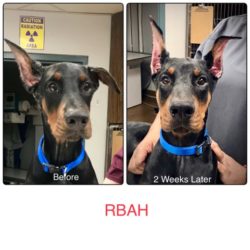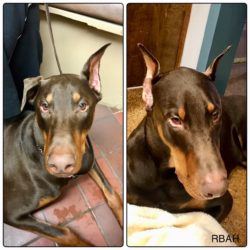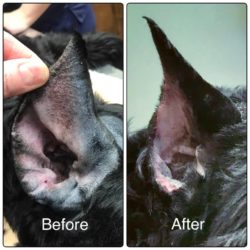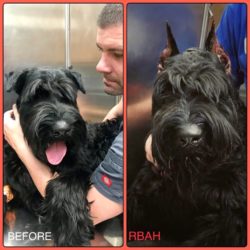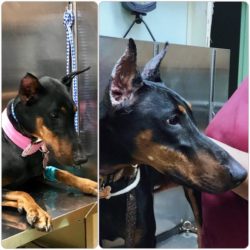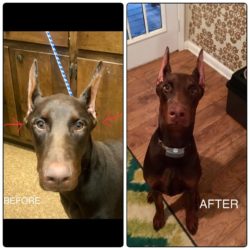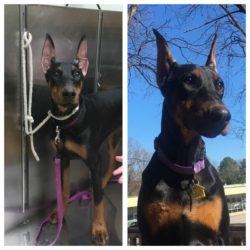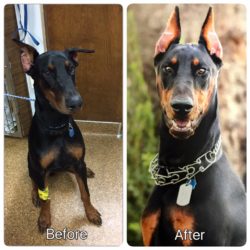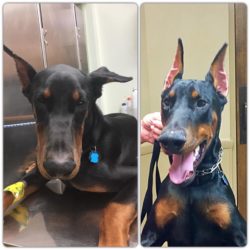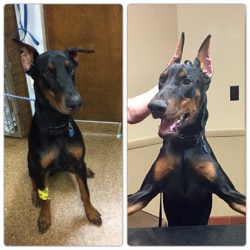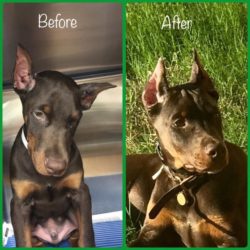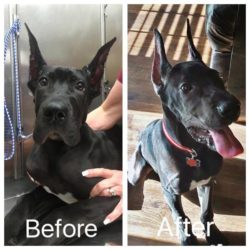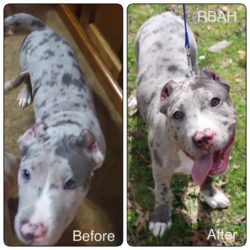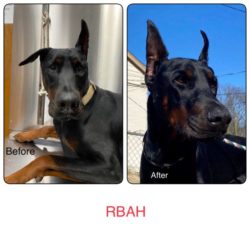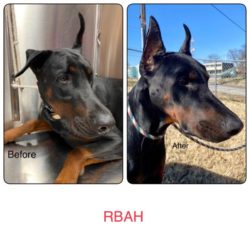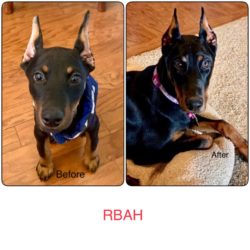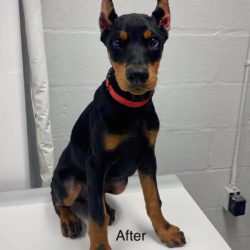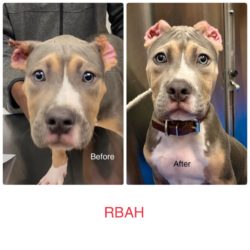Over 45 years combined experience and >8,000 procedures, Dr. Leggett and Dr. Lapova have developed a technique with emphasis on cosmetic appearance, symmetry, esthetic, practical value of the traditional breed standard, and superior pain management. Please note that cosmetic surgery is not a subject in veterinary school curriculum, and apprenticeship under an experienced surgeon is the best way to learn the art of cosmetic pinnectomy/otoplasty. Dr. Lapova is proud to call Dr. Leggett her mentor, and she was his only apprentice in 4 decades. We wished Dr. Leggett a happy retirement in 2014. Our expertise extends to Doberman, Great Dane, Boxer, Schnauzer, bully breeds, Cane Corso, Miniature Pinscher, Bouvier des Flandres and other traditionally cropped breeds. We crop Beaucerons for the Breeder of Merit and top show dogs in the country. Our Client base spans all regions of the United States, North America and Europe. From family pets to working dogs and movie stars, we can help you achieve the breed standard look. Albums in our Portfolio are organized by Breed for your convenience, feel free to check out other breeds! Images are copyrighted to RBAH, please credit when sharing, or we are happy to grant written permission.
During consultation with Dr. Lapova, we discuss the suitable choice for the individual dog or litter within the breed standard. Every cosmetic surgeon has their unique style. Styles are like handwriting, and we are not able to recreate someone else’s style. Sometimes the type of cartilage may not be suitable for your preference, and we are happy to discuss alternatives – such as different type of crop or leaving ears natural. Ideally, the crop should complement your dog, not distract from their beauty. Thorough evaluation, physical exam, risk: benefit analysis, current preventive care assessment, and post-operative care discussion will take place at the consult. We require current vaccinations and intestinal parasite screen/deworming – please bring medical records from your Veterinarian. We can help you update those if necessary. If the breeder administered vaccines within 2 weeks, we accept those, and the following care must be provided by a Licensed Veterinarian. The more prepared you are with records, the more time you will have to discuss the crop. Lastly, please be ready to engage in the consultation and ask questions. We request minimum distractions during your consultation.
Please make sure your puppy is in good general health before surgery. Body condition should be as close to ideal as possible, as underweight and overweight dogs have higher anesthetic risks. Upper respiratory infections, skin infections, and other signs of significant clinical issues must resolve before surgery. Please obtain a clean bill of health from your attending Veterinarian before embarking on the journey, especially if you’re traveling.
Ear crops follow the breed standard and purpose of the dog (show, family pet, working dog, etc.) The Doberman breed standard, as described by the DPCA, reads: “Cropped ears impart an appearance of alertness, determination, and watchfulness, and they aid in multi-directional hearing. In our standard, we do not describe an uncropped ear because this is a cropped breed. Dobermans with uncropped ears deviate from the standard twice — first by not having cropped ears, as required by the standard, and second by not having an erect ear carriage.” It is an individual choice to crop or leave natural! Traditional breed standard was created for the purpose of the dog, and many of these dogs carry the same purpose today – such as the Doberman exuding an appearance of protective companion. Purpose of the dog should be considered when making the decision to crop or leave natural.
At RBAH, we respect the breed standard. That means, no clearly defined breed, no real standard. For the breeds not recognized by the AKC – such as American Pitbull Terrier, American Bully, etc., we generally follow the standard for a similar breed such as Staffordshire Terrier or another registering body like the breed club. For mismark dogs (color which doesn’t follow breed standard), dogs with conformation that isn’t easily recognizable as a cropped breed; and dogs which may resemble a similar non-cropped breed as puppies (for example, a fawn Cane Corso and English Mastiff), we may ask for registration or other pertinent documentation to confirm the breed. If your puppy phenotypically resembles a non-cropped breed, is a mixed breed, etc., we reserve the right to decline surgery for ethical reasons. We will NOT crop any non-cropped breed to resemble a cropped breed. Due to our advocacy for the bully breeds, we do NOT perform “battle crops” or excessively short crops for ethical and health reasons – the only exception is reconstruction. We do NOT perform “custom crops” (crops extrapolated from one breed to the next or created on preference vs breed standard). When the breed standard is not specific, we may work with you to determine esthetic fit within your preference. While we currently crop albino and melanistic Dobermans, we in NO WAY encourage breeding or purchasing non-standard Doberman colors and refer to the DPCA Statement on Dobermans affected with Oculocutaneous Albinism. Dogs with this genetic condition, designated in pedigree as Z factor, can have extremely sensitive skin, eyes and ears and can develop skin cancer at a very young age.
Corrective and reconstructive otoplasty is Dr. Lapova’s special interest. These cases can be a result of a poor previous crop, or non-standing even if crop was excellent. There are very few surgeons experienced in reconstructive pinnectomy and otoplasty. Corrective and reconstructive procedures carry additional risks, commitments and costs. Please make sure you ask all the questions and understand the procedure, risks and benefits. Results can in no way be guaranteed and reconstructed ears often don’t look as sharp or symmetrical as if the crop was originally performed. We’ve been fortunate with many cases – please see the Reconstruction album below. We’d love to be your first surgeon – but we’ll be your second if needed.
Ear Cropping involves anesthesia and analgesia. To improve safety, we submit pre-operative blood screening to the laboratory, including blood coagulation. Consultation fee currently covers this test, provided consultation is done several days before surgery. This is subject to change at any time due to laboratory fee variability. Day of surgery consultations have optional labwork available in house. Vast majority of the test are normal. We will inform you if any treatment is needed prior to surgery. Modern anesthesia is very safe, but no anesthetic procedure is without a risk. Current statistics suggest 5/10,000 healthy dogs experience anesthetic episode, including death. Pre-existing conditions, including but not limited to heart defects, drug sensitivities, incubating infections, etc. are not always detectable on physical exam and labwork. Mild complications like nausea, diarrhea and lethargy are more common. We use extensive monitoring techniques to prevent complications, and limit daily surgery load to the number we can handle safely. Pain management includes IV injections before and after surgery, nerve blocks similar to what your dentist may do but for the ears, oral pain and anti-inflammatory medications, cryotherapy and therapeutic laser. Keep in mind that weight limits apply to larger breeds, we prefer them to be at 13-18 lb, no more that 25-30 lb unless this is a reconstruction. Should an exception be made for a patient over 24 lb, additional fees will apply. Weight and age limits apply to smaller breeds – please call us and ask!
Ear crops are like hair cuts – exact same shape may look differently on each dog due to individual stature, size, body type, head shape, width of forehead, etc. Ears don’t grow near as fast or big as the dog, and puppy’s ears will always look disproportionately longer and bigger than they do as an adult. Do not be alarmed, they grow into their ears; maturity may take 1.5-3 years. We cannot fully predict how tall ears will appear at maturity, as every dog’s cartilage elongation is individual. Even within a litter cropped identically, some dogs will have more or less elongation than others. We are currently collecting measurement data on ears before and after surgery as well as into maturity. Visual illusion of length and width also depend on facial and body structure.
Surgery is the initial step, and post-operative care period is crucial. Several follow up visits will be required for suture and rack removal, ear tapings, assessment of cartilage and skin healing, potential adjustments in medications and dosing, etc. Ear crops come with homework, so prepare to dedicate yourself to observation and follow up. **It is YOUR RESPONSIBILITY to follow up with weekly rechecks and tapings with our Hospital, or on your own; failure to do so may result in sub-optimal cosmetic appearance.** We are happy to schedule a training session in our posting method. It’s very difficult for us to show you at the first follow up since we are removing sutures and working with healing tissue. Additional complications may include bleeding, infection, excessive scarring, allergy to tape and other posting materials, etc. They are not common but happen from time to time.
Length of follow-up time is highly variable and depends on the breed, individual genetics, and your diligence at home. Every dog is different, and many cases require a year or more to stand – especially the Doberman, Great Dane, Boxer, Giant Schnauzer and other taller crops. If you cannot fully commit to the post-operative management or are not willing to accept surgical and post-surgical risks, ear crop is not the right choice. Results cannot be guaranteed, and some ears won’t stand for genetic reasons – average rate of non-standing or pocketing is 10-20%. This is not predictable. We only shape the ears and help in posting; we cannot guarantee cartilage will mature properly.
If you are a breeder, please allow adequate time for the entire litter to be cropped. We treat every puppy as an individual patient, not an assembly line. Anesthesia, analgesia, surgery and recovery are time consuming. While we respect efficiency, our top priorities are safety and quality. Non-refundable deposits are required, and special litter rates are available! It is crucial that you educate puppy buyers on the post-operative care, posting, and prepare them for the commitment. We encourage to make copies of the discharge instructions and surgical/posting forms and share them with your puppy buyers. If exporting puppies, make sure the importing country allows cropped dogs. It has come to our attention that some breeders mislead puppy buyers into thinking the crops were performed at RBAH, while they were not. You are welcome to verify the authenticity of the crop with our Practice.
Ear crop is a financial commitment; please budget for the surgery and aftercare along with all the preventive care that will be taking place concurrently. Please consider insurance for your dog, as many medical expenses are unpredictable. Most insurance plans do NOT cover elective ear cropping. We do our best to provide you with an estimate prior to surgery, if you haven’t got one, please ask! Should the tail reconstruction be needed at the time of ear crop, additional fees apply. Puppies tend to reach the tail revision site easier than the ears. Please ensure you supervise your puppy and use the “cone” collar consistently to prevent surgical site damage – or second repair and more costs can arise.
For the safety of your dog, PLEASE only allow a Licensed Veterinarian to perform surgery! Sadly, there are individuals who will botch the ears in their backyards, without proper anesthesia, pain management, or with medications obtained via illegal channels. It is cruelty to animals, practicing surgery without a license, and is illegal – not to mention the atrocious results we may or may not be able to correct.
We can also help post and tulip your Collie or Sheltie ears, or any breed where rosebud pinna should be corrected to forward fold. This method does not involve surgery, only taping.
As with any cosmetic surgery, the saying “you get what you pay for” couldn’t be truer. Many veterinarians crop ears – VERY FEW CROP THEM WELL. Keep in mind that some high-priced hospitals don’t deliver optimal results, but you will almost never get a quality surgery and anesthesia cheap. In our opinion, using the laser does NOT improve cosmetic outcome. Some surgeons are skilled with the laser; however it is our opinion that the skill of the surgeon outweighs their choice of tools. Laser surgery frequently results in jagged, unnatural incision edge, discoloration of dark hair to white, and lack of shaping precision. We use high quality post-operative cold laser therapy to reduce pain and inflammation.
When choosing a Veterinarian to alter the appearance of your dog for the rest of their life, it’s wise to ask to see their previous work. Inquire into quality of anesthesia and analgesia, commitment to post-op care, and communication; make a visual assessment of the style, symmetry, beauty flow with the head/neck/body, blending with the head, quality of healing and scar tissue, etc. Please ensure you like the style and are informed regarding benefits, risks, alternatives and commitments. This choice should not be based on cost alone, and natural ears are much more attractive than poorly cropped ears. Below is our portfolio. Enjoy the pictures of these beautiful dogs – most done by Dr. Lapova and few images as legacy to Dr. Leggett. Age is indicated whenever possible to help illustrate maturation process. Many of our Patients are long distance and our case load is heavy, so this portfolio is only a fraction of our work. We love to see the pictures as they grow up, so please email them!
Click here for a link to AKC statement on Dispelling the Myths of Cropped Ears and Docked tails. On that note, we do not perform debarking. We suggest studying your breed of choice for tendencies to vocalize and engaging the guidance of professional trainer to manage undesirable vocalization.
In order to secure your Consultation appointment, deposits are required and are NON-REFUNDABLE. This helps facilitate our surgical load and efficiency. We appreciate your understanding and look forward to meeting you and your dog.
*All Photos are copyrighted, and permission must be gained before using any of the copyrighted material.
Click here to read the blog by our surgeon, Dr. Yelena Lapova
Click here for Doberman ear posting video
Click here for Doberman ear posting video with single bridge, pocket bumpers and chin strap
Click here for Cane Corso, other mastiff and bully breed ear posting video by RBAH

